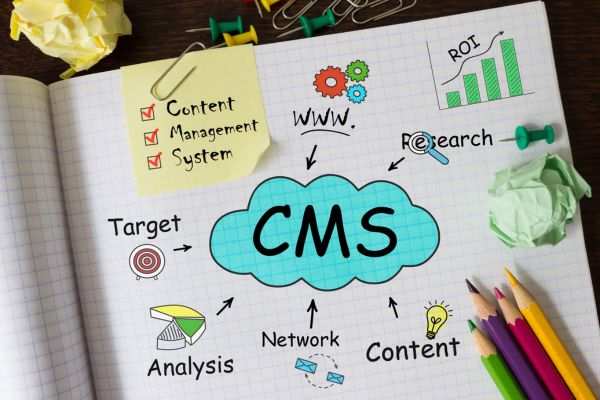Much has been written about the technology of training. The story is often the same: companies are chomping at the bit for the opportunity to exercise the latest and greatest training technologies in an effort to reduce costs and reach employees effectively.
The trend is understandable. Technology has made training much more convenient, and essential for global enterprises that need to train employees across the world. Instead of big travel budgets to bring employees to the home office or training center, companies are reducing the bottom line by using technology to push training out into regional offices.
But are employees better trained as a result of this technology boom? With companies fast abandoning traditional instructor lead training in favor of tech-based training, it is increasingly important to ensure technology remains the training messenger and does not become the message.
Regardless of whether a training system is a high-ticket technological wonder, or simply a bound, paper manual, the quality of training results should be the same. All training methods should:
•Accelerate the productivity of new and existing employees.
•Accelerate the identification of poor performers.
•Provide the structure required to use existing resources and implementation tools efficiently.
•Create “across the board” accountability for training results, from top management to every new hire.
•Enhance the ability of the trainer/supervisor to provide effective training.
Technology can enable such results, but it can’t assure they’ve been achieved. Technology can provide a platform for imparting knowledge, but it can’t distinguish between theory and practice.
Technology can be used to measure quantitative retention, but it can’t evaluate qualitative application. Such assurances, distinctions, and evaluations can only be provided by people.
Thus the question technology can’t answer: are employees actually learning from technology based training programs? When the training is complete, are employees able to demonstrate comprehension and application of their knowledge in real-world situations, removed from the classroom and pointed questions?
Training vs. Learning
In typical training scenarios the trainer does 80% of the work, and while participants may be able to pass a final written or computer test, they have only a 10-30% retention rate and in many cases are not expected to demonstrate application-based knowledge.
By contrast, in performance-based learning environments where participants are expected to discuss, explain and demonstrate application, participants perform 80% of the work, resulting in a retention rate of 50-80% of the knowledge.
The moral? Even million-dollar Internet delivery systems can be ineffective unless three basic, decidedly non-technical cornerstones are established for all training programs. First, there must be an effective human intervention strategy. Second, accountability for results must be established. Third, there must be an instructional design that empowers trainees to take ownership of their learning. With these simple foundations in place, every company can experience superior learning results with the help of technology.
Human Intervention Strategy
A performance-based learning environment must have an effective Human Intervention Strategy to mold and monitor the learning experience. Such a strategy is the foundation of an effective training program.
In order to keep the knowledge relevant and applicable, company-wide stakeholders must forge specific, relevant learning objectives out of the training fire and builds in comprehension and application from a knowledge-based platform.
Creating an implementation strategy allows managers to decide what resources or technologies are appropriate to achieve prescribed training goals and philosophies. By determining the phases of the training, the competency goals for each phase, and the characteristics of the training audience, decisions can be made about:
•Appropriate methods for the delivery of the training.
•What resources are needed, and in what form are they needed to be effective – paper based or interactive media, for example.
•Whether to build or buy the required resources.
•Whether internal or external resources will be utilized, based on needed expertise.
As a result, managers can better negotiate purchases of technology-based training programs and avoid spending money on features that bring little or no value to the established learning objectives.
Establishing Accountability
It’s been said of training that the real genius is not in building the materials; it’s in getting them used. Each year, companies waste money on resources that are either not used, or are used improperly. If the answer to an effective training infrastructure rests with the implementation strategy, then the answer to the issue of implementation is accountability. Lack of accountability in a training program will sink even the most expensive systems.
Trainees have a responsibility to be prepared and willing to be trained. But the ultimate success or failure of a training program depends on management’s commitment to own the outcome.
That kind of accountability can be assured by establishing a platform upon which the learning is orchestrated.
A Learning Platform
Establishing a learning platform requires identifying standards by which results are measured, then providing a “roadmap” that empowers the learner to achieve those standards. It is a process of incremental measurement which enables everyone with a stake in the training and its outcome
– trainee, trainer and management – to be aware and responsible. And it allows the following questions to be answered definitively:
•Has the trainee learned what needed to be learned?
•Was the trainer actively involved in the learning?
•Was management aware of the quality of learning delivered?
Keeping the Messenger in Place
Technology can play an essential role in monitoring and tracking activities required by the performance system. But technology can become a crutch if we let it. If we rely on technology to do all the work, we’ll almost certainly have reduced training costs and perhaps increased training test scores. But will employees be able to discuss, explain, and most importantly, apply the knowledge they’ve learned once they leave the training room?
Corporate training programs may be well served by technological advances. For that reason, it is increasingly important to keep technology in check. By first establishing a clear implementation strategy and by setting in place a performance system with clearly defined roles of accountability, any training program can experience a dramatic increase in efficiency and effectiveness, and will ensure the money spent on technology returns the investment.
Frank Sarr is the founder and president of Training Implementation Services. Inc. His decades of experience in sales, management, recruiting, and training has convinced him that high performance requires structure and accountability.
Frank began his career with Connecticut General Life Insurance Company/CIGNA as a brokerage consultant. During his 18 years with the company, he ultimately assumed responsibility for agent and broker consultant training as well as management development for the individual life insurance division of CIGNA. Following his association with CIGNA, he became the Director of Financial Services Marketing with Wilson Learning Corporation. In this role, he marketed Wilson Learning’s training products to the financial services industry throughout the United States, Australia and Canada. In addition, Frank recruited and trained the entire 40-plus sales organization for Independent Financial Services, a start-up company specializing in fee-based planning.
Frank received a BA in Economics from Notre Dame and an MAT from Oberlin College, where he was a Ford Foundation Scholar. He earned his CLU from the American College.


